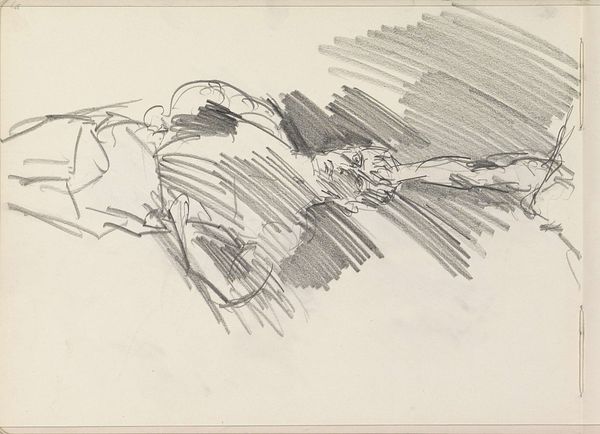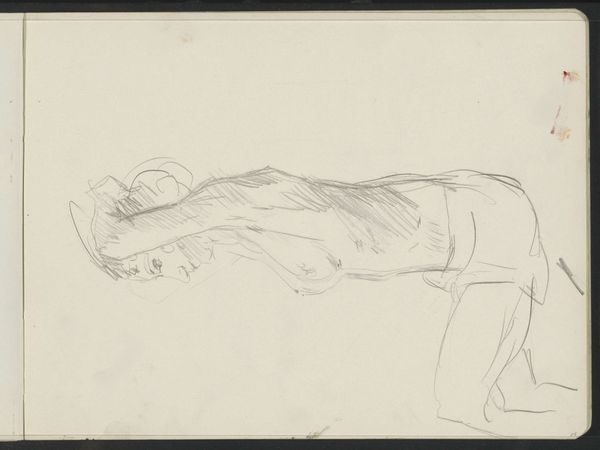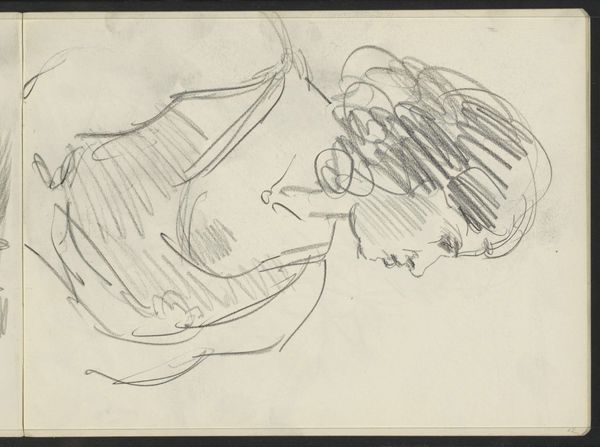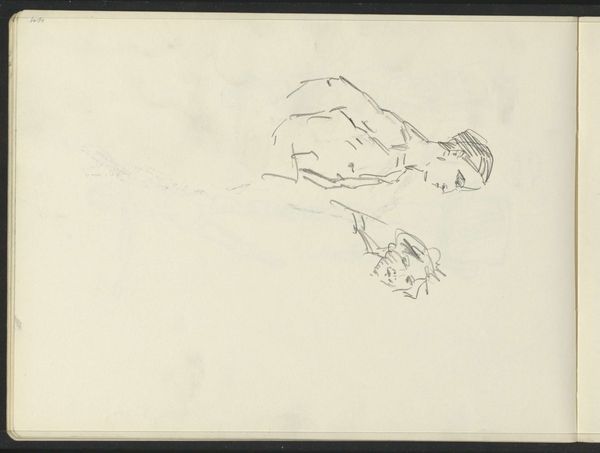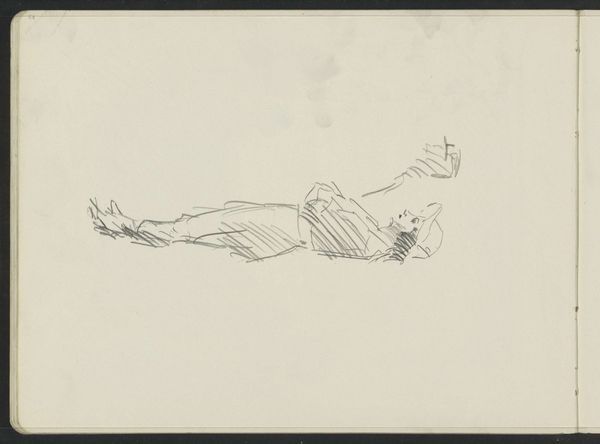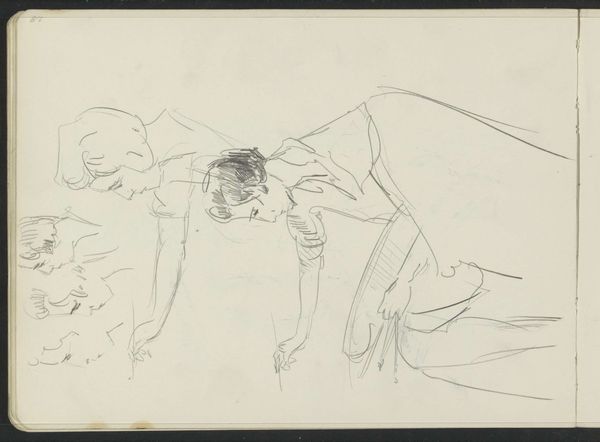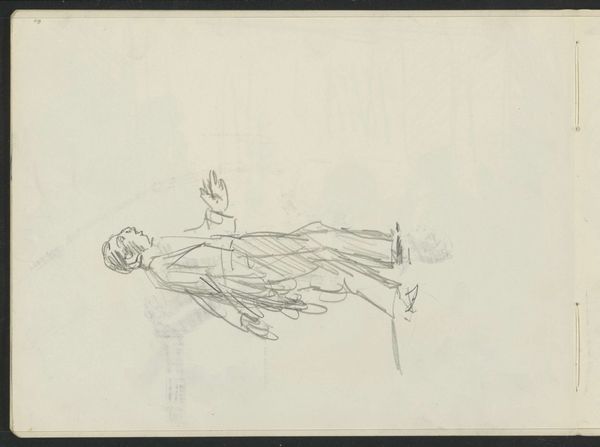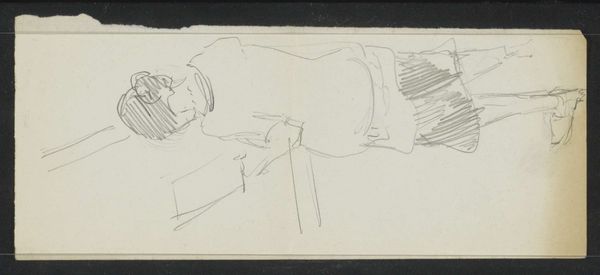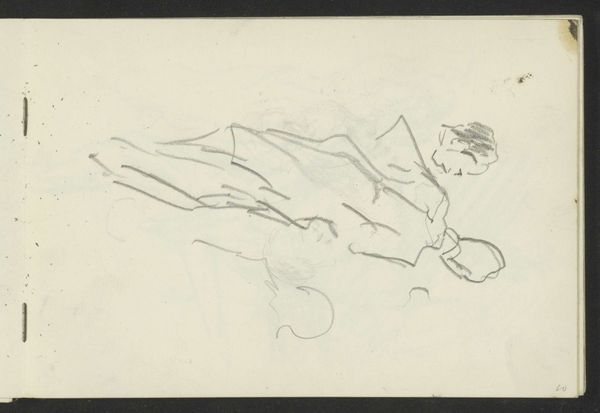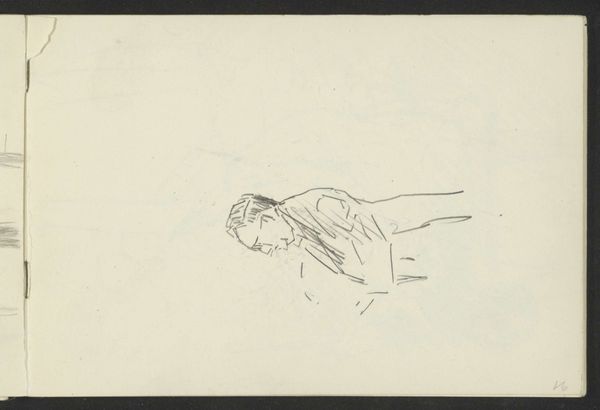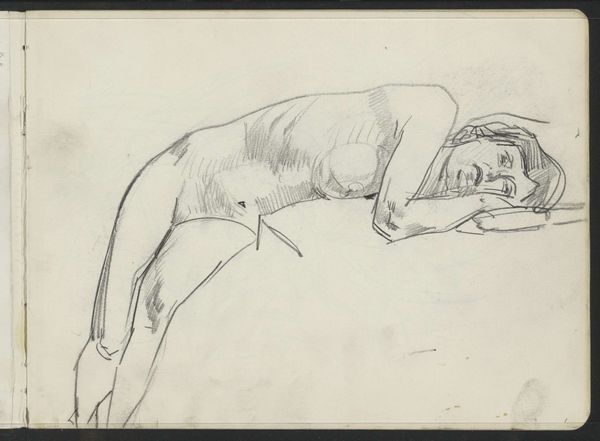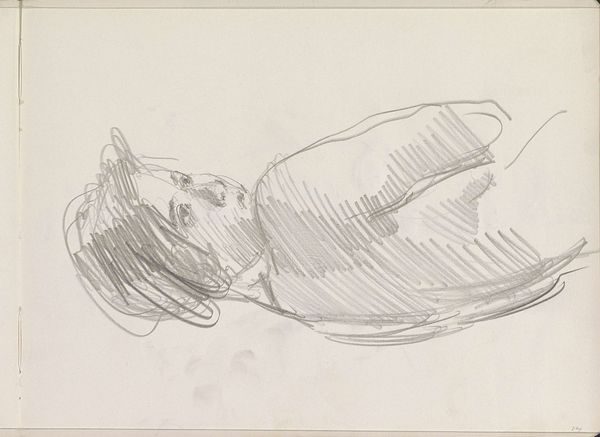
Copyright: Rijks Museum: Open Domain
Curator: Take a look at this compelling sketch from Isaac Israels, dating roughly between 1915 and 1925. It's titled "Zwarte man in kostuum"—"Black man in a suit." Editor: There's a powerful immediacy to it. The rapid, almost frantic pencil strokes give a real sense of fleeting observation. It feels very intimate, like a private glimpse. Curator: Israels' technique is fascinating, particularly when you consider the materiality of the work. This is just pencil on paper, yet he manages to convey so much about form and texture with incredibly economical means. Notice the hatched shading to render the head in contrast with more open sketchy treatment of the body. It reveals Israels’ focus on efficiency in his practice of production and representation. Editor: Contextually, it's quite charged. Israels, a white European artist, depicting a Black man, presumably also in Europe at a time when racial representation was fraught with colonial undertones. It pushes one to question how notions of race, identity, and representation are inherently linked to power structures and artistic intentions. Is this documentation, admiration, or something more complex? Curator: That's precisely where the dialogue begins, isn’t it? I'd suggest the materiality emphasizes the rapid conditions of modern urban experience. The pencil allowed for swift reproduction to feed demands for up-to-date illustration. Perhaps his motivations lay more in capturing a contemporary scene. Editor: Perhaps, but intention and reception aren't always aligned. Looking at it now, we have to consider its life beyond its initial creation. Its modernist aesthetics shouldn't negate the significance of representation. The sketch itself becomes a site of inquiry—what labor and consumption supported Israels practice? Was it bought to create change in a biased society, or fuel the flames? Curator: And so, in this seemingly simple sketch, we find a complex layering of artistry and sociopolitical context, revealing more about ourselves as viewers and the cultural histories we each carry into this museum. Editor: A necessary and perhaps difficult, though extremely important intersection to address!
Comments
No comments
Be the first to comment and join the conversation on the ultimate creative platform.
